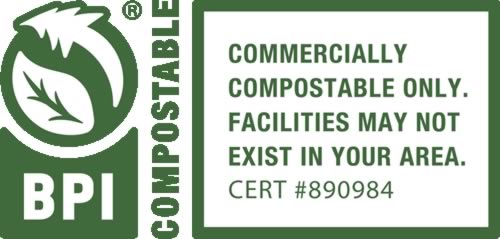RSL Compliant
RSL COMPLIANCE CREATES SAFER PRODUCTS
RSL compliance results from consumer, government, and NGO demand for safer products and materials. A focus on RSL compliance prevents negative press, damage to brand image, and the loss of sales and public trust.
The following chemicals have been identified as Chemicals of Concern (COC) and may require disclosure by chemical suppliers to Third Party Assessor for hazard screening:
ZDHC 11 list (ZDHC is geared towards no intentional use): Chlorobenzenes, Chlorophenols, Halogenated Solvents, Long-chain Perfluoroalkyl Acids (LCPFAAs, Nonylphenol (NP) , Nonylphenol Ethoxylates (NPEOs), Organotins, Phthalates, Polycyclic Aromatic Hydrocarbons, Naphthalene (PAHs/Naphthalene), Short-Chain Chlorinated Paraffins, Toluene
California DTSC: Alkyl phenol & Ethoxylates, Aromatic amines & Azo dyes, Perfluorochemicals, Formaldehyde, Phthalates and Triclosan
Other RSL considerations: Formaldehyde, Blue colorant, DMFu, Chlorinated aromatics, Flame retardants, Heavy metals (Cd, Hg, Pb, As, CrVI), Organotins, NMP, Benzene, Phthalates, Chlorinated Paraffins, PFCs, HFCs, Phenol, PVC, APs & APEOs, N-Nitrosamines, Asbestos, Halogenated Solvents and Ozone depleting chemicals.
Why Is RSL Important
Consumer Safety
Protect the health and safety of consumers and others handling finished products.
Legal Compliance
Products will comply with the applicable chemical content and chemical exposure laws of every governmental jurisdiction in which those products are distributed.
Client Success
Circule® packaging solutions ensure your success and provide assurance that all products meet brand and legal RSL requirements.
ISO 17088
“This specification is intended to establish the requirements for the labelling of plastic products and materials, including packaging made from plastics, as ‘compostable’ or ‘compostable in municipal and industrial composting facilities’ or ‘biodegradable during composting’ (for the purposes of this International Standard, these three expressions are considered to be equivalent). The labelling will, in addition, have to conform to any international, regional, national or local regulations (e.g. European Directive 94/62/EC).” -International Organization for Standardization

CIPET Approved

Central Institute of Plastics Engineering and Technology (CIPET) is the Plastics Nodal agency in India. CIPET labs are approved to conduct testing in accordance with IS/ISO: 17088 Standards. Testing by CIPET and approval by the Central Pollution Control Board (CPCB) is a pre-requisite to sell compostable products in India.
CIPET plays a role in bridging Industry Requirements with Government Policies. It is part of the Ministry of Chemicals and Petrochemicals.
ASTM Standards
“Organized in 1898, ASTM International is one of the world’s largest international standards developing organizations. Defined and set by us, ASTM standards improve the lives of millions every day. Combined with our innovative business services, they enhance performance and help everyone have confidence in the things they buy and use – from the toy in a child’s hand to the aircraft overhead. By understanding commercial needs and consumer priorities, we touch every part of everyday life – helping our world work better.” – ASTM International
BIOPLASTICS STANDARDS AND CERTIFICATIONS
EN 13432
- European standard for compostable plastics
ASTM D6866
- Test method that determines the amount (%) of new carbon (biomass carbon) compared to old carbon (fossil carbon)
- Based on total carbon content of the material and not total mass of the material
- Contemporary biomass has 100% radiocarbon and is absent (0%) of fossil fuels. ASTM D6866 uses this difference to determine the amount of biomass carbon vs. fossil carbon.
ASTM D6400
- Specification for compostable plastics
- For plastic films and solid plastic products
- Specifies three criteria
- Disintegration
- Less than 10% of test material remains on 2mm sieve
- Controlled compost conditions at thermophilic conditions (135°F / 58°C) as defined in ASTM D5338 & ISO 16929 test methods
- Time: 12 weeks or less (84 days)
- Mineralization / Inherent Biodegradation
- 90% Conversion to carbon dioxide, water & biomass via microbial assimilation
- ASTM D5338 – defines test method used
- Time: 180 days or less (the same rate as natural materials – leaves, paper, grass, and food scraps)
- Safety
- No impacts on plant growth, using OECD Guide 208
- Regulated (heavy) metals less than 50% of EPA prescribed threshold
- Disintegration
ASTM D6868
- Specification for compostable plastic used on paper and other compostable substrates
- For packaging and food service items, made of plastic coated paper, board, and other fibers

Biodegradable Products Institute (BPI)
- Provides an independent certification program for products that meet all requirements of the ASTM D6400 and ASTM D6868 (if applicable) standards
- Uses independently approved labs and reviewers
- Not based only upon manufacturer’s claims
- Recognized by municipalities and composters across the US and Canada
For more information, visit www.bpiworld.org

TÜV Austria
The European equivalent of the BPI, provides an independent certification program for products that meet all requirements of the European EN13432 standard.
